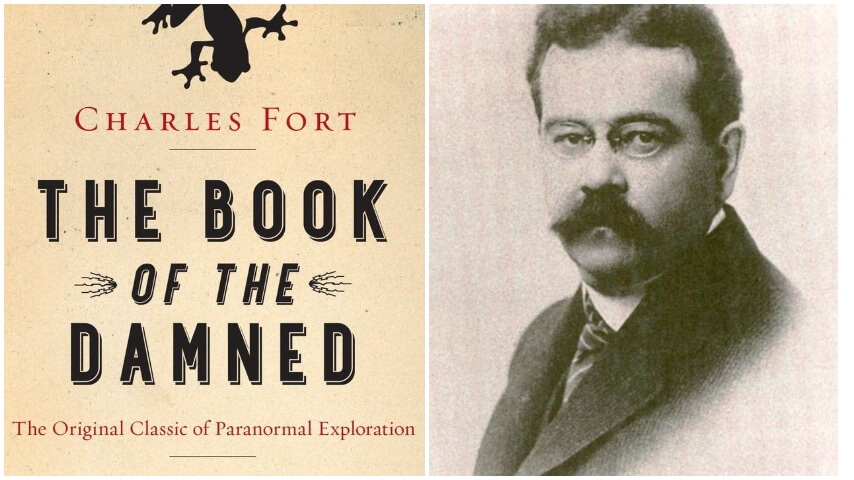The simplest explanation seems to be not that Fort was a crank or a fraud, but that he questioned everything unexplained, real or not.
Strangest fact: Fort’s friends started a Fortean society and had to trick him into joining. A group of writers including Ben Hecht, Theodore Dreiser, Alexander Woollcott, and Fort’s editor Tiffany Thayer, organized a Fortean Society in 1931, full of writers who admired his ideas. But Fort himself was “lured to its inaugural meeting by false telegrams.” Fort objected to the group, surmising that it would quickly fill up with true believers in the occult, and not questioners and skeptics as he was. He refused the presidency of his own fan club, and Dreiser had to step in in his place.
The Society petered out when Thayer died in 1959, but much of their materials passed to the International Fortean Organization (INFO), which started in the early ’60s and still exists. The Fortean Times magazine began publishing monthly in 1973, and is still in circulation in the U.K.
Thing we were happiest to learn: While Fort is hardly a household name, he casts a long shadow. Sci-fi writers, including Philip K. Dick, Robert Heinlein, and Robert Anton Wilson, have all noted him as an influence. Alfred Bester’s novel The Stars My Destination names the first teleporter after Ford. And Stephen King mentions Fort in several books (the parents of the child at the center of Firestarter are advised to read Fort instead of Dr. Spock). Paul Thomas Anderson’s 1999 film Magnolia is full of unexplained events drawn from Fort, (among other things, Fort was fascinated by animals falling from the sky without explanation), and a scene set in a library has one of Fort’s books on display.
Thing we were unhappiest to learn: It was likely trauma that pushed Fort into Forteana. His father, a Dutch-born grocer, was authoritarian and abusive, so young Charles escaped as best he could, into books and nature. While he wasn’t a good student, he was a voracious reader, and collected shells, minerals, and birds, with an eye towards being a naturalist. He escaped in a larger sense as soon as he turned 18, traveling around the western U.S., the U.K., and southern Africa, where he fell ill. (He was nursed back to health by a childhood friend, Anna Filing, who he soon married). But then another cruel fate befell Fort—he became a freelance writer. He likely would have struggled on working odd jobs and publishing the odd piece in newspapers and magazines, except a wealthy uncle left him an inheritance large enough to let him quit his job and focus on writing about the truly odd.
Best link to elsewhere on Wikipedia: One of the oldest strange phenomena Fort wrote about was spontaneous human combustion. Scientific debate still rages on whether the phenomena is real, but no one can deny that in rare instances, human remains have been found destroyed by an explosion with no apparent cause. Reports go back as far as 1731, when Italian Countess Cornelia Zangari Bandi was found dead one morning—rather, her lower legs, three fingers, and part of her skull were found amidst a heap of ash in her bedroom. The case was famous enough that Dickens mentions the Countess in Bleak House, and the “possibility of what is called spontaneous combustion.”
Science’s best guess at an explanation is that these incidents are not spontaneous, but caused by an external source like a cigarette, which ignites alcohol on the victim’s clothes, and their body fat adds fuel to the fire. (Heavy drinking and low mobility that would prevent an escape do seem to be common factors in many spontaneous combustion cases).
Further down the Wormhole: Usually we take a few twists and turns to get to our next topic, but it’s hard to resist going straight for List of Reportedly Haunted Locations. (Oddly enough, one of the Haunted Locations is named Charles Fort, but it’s a fort in Ireland built for English King Charles II during Britain’s long occupation of Ireland.) We’ll find out whether we are or ain’t ‘fraid of no ghost next month.









































